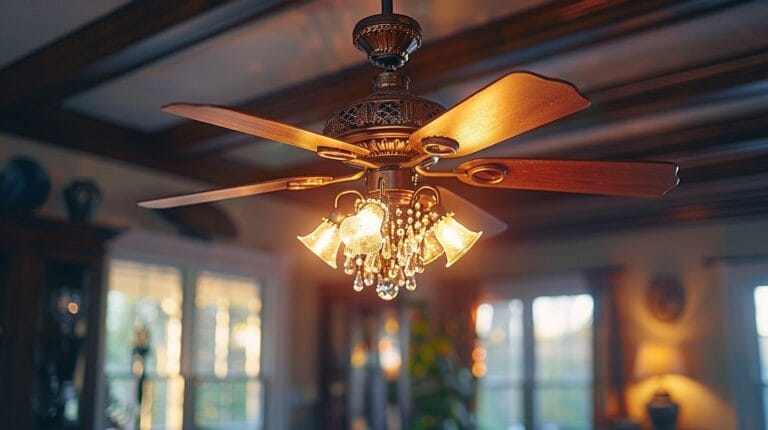Led Beam Angle Chart: The Ultimate Guide to Beam Angles
Just as a ship’s captain uses degrees to navigate the sea, we use the same beam angles to navigate through the world of LED lighting, considering the ceiling height and lumens per square foot.
An LED’s beam angle is a critical factor in shaping the ambiance and functionality of any space. It decides the spread of light from the lamp, determining everything from a narrow spotlight that highlights a piece of art to a wide floodlight that illuminates a basketball court.
But how exactly do these beam angles work, and how do we select the right one for our needs? Let’s shine a light on that mystery with our Led Beam Angle Chart guide.
Key Takeaways
- LED beam angles determine the spread of light and play a critical role in shaping the ambience and functionality of a space.
- Narrow beam angles are ideal for accent lighting, providing focused illumination for highlighting specific areas or objects.
- Wide beam angles are suitable for general and ambient lighting, covering a larger area and creating feelings of openness and friendliness.
- Choosing the correct beam angle for your building is dependent on factors like room size, layout, desired lighting effect, and the number of lumens required.
Understanding LED Beam Angle

To fully grasp the impact of LED beam angles, we first need to unpack their definition and significance. The LED beam angle is the degree of width that light emanates from the light source, or in simpler terms, it’s how wide the light spreads from the bulb. Understanding this is paramount in achieving the desired lighting effect.
An ultimate guide to LED includes a well-designed LED beam angle chart, which is an indispensable tool in selecting the right LED beam angle for your space. It allows you to visualize the beam spread and intensity. Different lighting applications, such as those in places with high ceilings, stand to benefit from various beam angles.
For accent lighting, a narrow beam angle works wonders in highlighting specific features or artworks. On the other hand, wide beam angles excel in ambient lighting, providing balanced illumination for large spaces such as living rooms or warehouses.
Exploring Different Beam Angles for LED Lights

The distinct characteristics and benefits of narrow and wide beam angles in LED lighting are worth exploring. A narrower beam angle, ideal for accent lighting, provides concentrated light that’s perfect for spotlighting objects. Conversely, a wider beam angle offers more general, diffused lighting, suitable for spaces where a pleasant and inviting atmosphere is desired.
However, choosing between narrower and wider beam angles isn’t just about function—it’s also about creating an emotional response. A narrower beam angle can create a focused, intimate setting, perfect for cozy reading nooks or highlighting artwork. A wider beam angle, on the other hand, can evoke feelings of openness and friendliness, suitable for living rooms or open-plan offices.
Here are a few points to consider:
- A narrower beam angle can create a focused, intimate setting, perfect for cozy reading nooks or highlighting artwork.
- A wider beam angle can evoke feelings of openness and friendliness, suitable for living rooms or open-plan offices.
- And of course, the versatility of LED lights allows us to mix and match beam angles to create unique and innovative lighting designs.
Choosing the Right Beam Angle for Different Lighting Needs

So, how do we choose the right beam angle for different lighting needs? It’s crucial to consider several factors, such as the room size, layout, the desired lighting effect, and lumen output requirements.
For task lighting, a narrower beam angle is typically preferred to provide concentrated light that’s perfect for reading, cooking, or any activity that requires a well-lit workspace.
For ambient lighting, a larger beam angle is usually the way to go, generating a broad spread of light and creating a warm, inviting atmosphere.
Understanding Lumen Output and Beam Angle

The intricate relationship between lumen output and beam angle affects the brightness and light distribution per square foot in a space. The number of lumens, a unit of illumination referring to the total amount of visible light emitted by LEDs, is a measure of light output. Beam angles, on the other hand, determine how that light is distributed.
A narrower beam angle results in a more concentrated light, while a wider angle distributes the light over a larger area. This balance influences both the brightness and distribution of light, impacting the overall lighting effect.
Can LED Beam Angles Affect LED Forward Voltage by Color?
When selecting LED lights, understanding the guide to diode specifications is crucial. LED beam angles can indeed affect LED forward voltage by color. It’s essential to consider how the light will be distributed and the color temperature to ensure optimal performance for your specific application.
Using an LED Beam Angle Chart as a Resource

An LED beam angle chart is a vital resource in optimizing lighting and could be regarded as an ultimate guide to LEDs. It provides essential data about your light source, illustrating how the beam angle will change the appearance and effectiveness of your lighting. This can be seen as a basic lighting tool that aids in making informed decisions and pushing the boundaries of what our LED lighting can accomplish.
To use the chart, first, identify your desired illumination effect, then refer to the chart to find the beam angles that deliver that effect. The chart will show how the light spreads from the source, and how the intensity of the light diminishes with distance.
Conclusion
So, we’ve explored the world of LED beam angles, understanding their variations and impact on lighting. We’ve understood how to determine the correct beam angle for various situations, factoring in the number of lumens and how it ties to light output.
We now know that an LED beam angle chart is a valuable resource in this journey. By using this knowledge, we can make informed decisions about our lighting needs and create the perfect ambiance in any space.
Frequently Asked Questions
What is a beam angle and how does it affect lighting?
The beam angle of a light bulb, which determines the spread of light it emits per square foot, is critically important for your building’s lighting. A wider beam angle would be suitable for general lighting, while a narrower beam angle is better for focused or decorative lighting.
What types of lighting fixtures use different beam angles?
Different areas require different beam angles. For example, higher ceilings may need a wider beam angle to cover more square footage, while decorative lighting may use a narrower beam angle to create a focused effect.
How do I know which beam angle to use for my space?
The beam angle to use depends on the height of the ceiling, the square footage of the area, and the type of illumination required. It’s important to consider these factors when choosing the appropriate beam angle for your lighting needs.
What is the significance of beam angles in commercial buildings?
In commercial buildings with high ceiling, the beam angle of the lighting fixtures affects the productivity and ambiance of the space. Understanding light angles is thus crucial. The number of fixtures and the distribution of light across the area play a crucial role in office lighting and other commercial settings.
What are the most common beam angles used in LED lighting?
LED beam angles can range from 120 degrees for broader coverage to 45 degrees for more focused lighting. Understanding the specific requirements of the space is essential when selecting the appropriate beam angle for LED lighting solutions.







